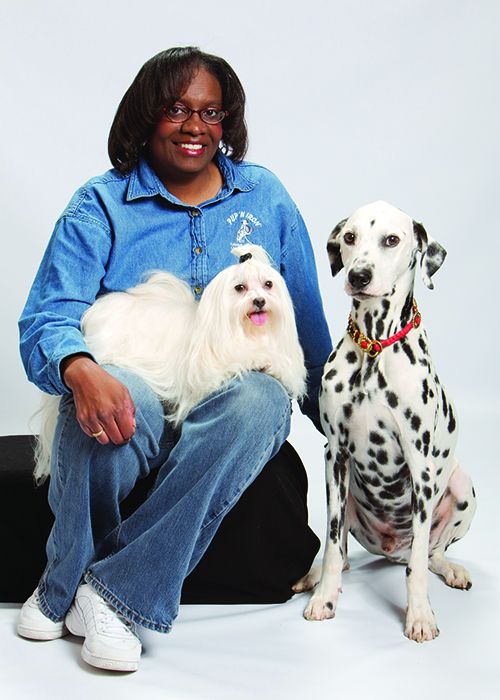
As an African American, I’ve found these past few months difficult. I’ve been examining different aspects of my personal and professional life and reflecting on the various journeys that brought me to where I am today.
I’m a dog trainer – a professional in an industry with few Black colleagues. This isn’t the first time I’ve wondered why there are so few people of color in my profession, but it’s potentially the most impactful time to discuss it, in hopes of increasing the diversity of what has long been an extremely white occupation in the U.S.
HOW I GOT HERE
In 1985, I walked into my first dog obedience class with Casey, my new Irish Setter puppy. The class was run by the local kennel club and held at a community center in Jacksonville, North Carolina, where my U.S. Marine husband was stationed.
As the only African American in the class, I stood out, but this did not concern me. As a child, I attended predominantly white schools and lived in many white-majority neighborhoods; I was used to being one of the few Black people in many situations! Besides, I enjoyed what I learned in class so much that, after only a few sessions, I decided that I wanted to earn obedience titles with Casey and become an obedience instructor myself.
Recognizing my enthusiasm and knack for training, the seasoned and much older ladies of the kennel club took me under their wings, mentored me, and welcomed me into their inner circle. I’ve been thoroughly immersed in the world of dog training and behavior ever since.
IN THE MINORITY
I was incredibly lucky to have so much support from my fellow dog trainers, especially since I have often been the only African American wherever I went in the dog world, whether I was competing at local conformation dog shows or obedience or agility trials. I see more people of color in the dog world today, but at most local events, out of the dozens in attendance, you’d be able to count Black people on one or maybe two hands.
I’m confident when competing with my dogs against anyone in a dog show. But in all these years, I have felt most uncomfortable among my dog-trainer peers at professional dog-training conferences, workshops, and seminars. Why is this? I’ve thought about it a lot.
For one thing, I stand out even more at these educational meetings than at dog shows. The dog-training profession is strikingly white and largely comprised of white, middle- and upper middle-class women. This is especially true of the subset of trainers who use positive reinforcement and science-based training.
But it’s more than just being a minority. Through the years I have attended many dog-training conferences and events. While I can’t say I experienced any overt racism or bigotry, I often felt discounted and downright invisible. Worse, on occasion I was mistaken as “the help” at the conference hotels where the events were being held.
I don’t know how to explain this, except to say that dog trainers are not always perceived as the most inclusive people, welcoming and open to different points of view and perspectives. There is a joke about dog trainers that goes, “If you put two dog trainers in a room, what’s the only thing they would agree on? That the third dog trainer is wrong!” The profession is rife with contrasting schools of thought and methodologies, complete with exclusive cliques and very strong lines drawn in the sand.
Most people who know me know that I walk to the beat of my own drummer and I’m generally unbothered by the opinions of others. But I must admit that stepping out of the comfort zone of my own little training community into the big one at large was sometimes daunting even for me, a middle-class, suburban Black woman raised and educated among white people. Think of how difficult it might be for newcomers to break into the dog-training profession, especially when they don’t see anyone else who looks like them at the table.
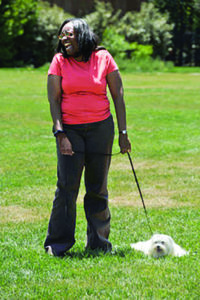
It wasn’t until I became a minor celebrity from appearing on the reality television show “Greatest American Dog” in 2008 that other trainers started noticing and acknowledging me and speaking to me at events. At that point, dog training hadn’t ever been the center of a prime-time broadcast television show, and most trainers had seen at least one episode; it seemed like the show was a safe topic as an entry point to conversation. I met and made friends with many more fellow trainers after the show ended.
FRAUGHT RELATIONS BETWEEN DOGS AND AFRICAN AMERICANS
Historically, the relationship between Black Americans and dogs is quite different than that of white Americans. Our relationship with dogs has been complicated and tainted and affected by violence, fear, and intimidation.
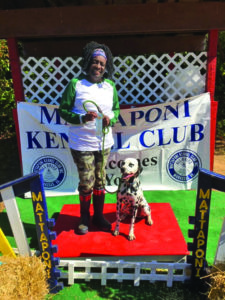
As a very young child in the 1960s, I regularly saw images on the nightly news of Black people being knocked down with fire hoses and police wielding batons, accompanied by teeth-bared and lunging German Shepherd Dogs – dogs who were sometimes even let loose to terrorize and attack civil rights protestors. Those images haunt me to this day.
However, we can go even further back than that. Dogs were an integral tool in the implementation and management of the institution of slavery in this country, from their presence and usage on slave ships during the middle passage, to the shores and plantations where dogs were used as tools of intimidation and bred and trained to track, attack, and even kill runaway slaves.
These experiences have undoubtedly led to a multigenerational fear and avoidance of dogs in many Black families. Even within my own family, I have relatives with such a real and present fear of dogs that they refuse to visit my home (I have never had fewer than two dogs, and today I have five: two Dalmatians, a Pharaoh Hound, a long-haired Chihuahua and a Yorkie).
In poor neighborhoods in many cities, dogs often play a role as a household’s protection against crime. In neighborhoods where dogs like this are common, children are uniformly warned against approaching dogs – any dogs.
Given all this, it makes sense that it has been a bit of a longer and tougher road for dogs to be welcomed and thought of as viable and close members of African American families.
Statistics vary according to their source, but every survey or study we were able to find confirmed one thing: Black Americans are far less likely to be dog owners than Americans of other races.
In 2006, the Pew Research Center published a study that asked people of various races whether they owned pets, and if so, what kind? Of the white households that owned pets, 45% reported owning a dog. Of the Black households that owned pets, only 20% reported owning a dog.
It’s much easier to find statistics regarding “pet” ownership than “dog” ownership. A 2018 poll conducted by Branded Research, Inc., asked 14,755 participants about “pet” ownership. The majority – 66% – reported owning a pet of some kind. About 70% of Caucasian participants said they owned at least one pet; only 44% of Black participants said they were pet owners.
The 2017-2018 American Veterinary Medical Association’s “Pet Ownership & Demographics Sourcebook” shows similar numbers: “Pet ownership differs among racial and ethnic groups. The highest rate of pet ownership overall in 2016 was seen among white households (64.7%), with Latino/Hispanic (61.4%) households next. The lowest rate was found among Black/African-American households (36.9%).”
INCREASING THE VISIBILITY OF BLACK TRAINERS
I often ask other trainers how they got into dog training. For many, it wasn’t until they attended a dog-training class with their own dog (as in my own experience) or had the opportunity to hire a professional dog trainer to help them with their dog, that they considered entering the profession.
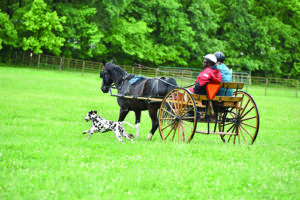
This is why I’d like to suggest that the more trainers there are who are people of color, the more people of color could see that dog training might be a good career choice for them! Also, I suspect that many more Black and brown people would engage the services of a professional dog trainer if there were more Black and brown dog trainers!
As a dog trainer, what can I do to help make my profession more inclusive and diverse? I have a few ideas:
1. Extra effort must be made to usher in newcomers from diverse populations. That means seeking and recruiting clients, staff, interns, and working students from different races, cultures, and nationalities.
2. We need to create and foster an environment that is nurturing and welcoming to everyone. Learning about cultural differences so we can better gain an understanding of and communicate with racial and cultural minorities is a good start.
3. I encourage all trainers to examine their own training programs, looking for possible barriers to diversity within our marketing and outreach, staff, communication style, and educational materials. This includes acknowledging possible biases and/or lack of sensitivities within ourselves and others around us and taking steps, no matter how small, to do better. To change, you must want to change.
4. Trainers should apply the same principles and be just as outspoken about our commitment to the humane, fair, and compassionate treatment of our fellow human beings as we are for dogs.
5. Let it be known that you fervently stand up against racism, discrimination, and bigotry, both within our industry and society at large. Our community mirrors society at large and is not exempt.
BE WELCOMING
My hat will always be off to those “ladies of the club,” who helped draw me into dog training some 35 years ago. Honestly, they were a gruff old bunch of heavy-handed women (with dogs and people), rough around the edges, and definitely entrenched in old-fashioned dog-training methods.
In regard to inclusivity, however, those women were way ahead of their time. They welcomed me with open arms when they didn’t have to. If it weren’t for them, I might have missed out on one of my greatest passions in life. Let’s work together to make sure other dog enthusiasts who look like me don’t miss out on theirs.
Canine education specialist, dog behavior counselor, and trainer Laurie C. Williams is the owner of Pup ‘N Iron Canine Fitness & Learning Center in Fredericksburg, Virginia.


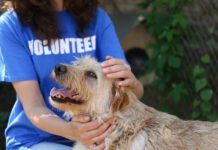


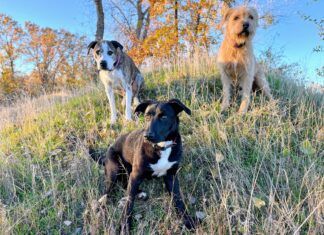
As a woman of color, I thank you for speaking up about this issue and how it pertains to this industry. I’m just a lucky dog-mom, not a trainer, but until I read your article, it didn’t really hit me– but you’re right– all the trainers I’ve seen advertised or talked about are almost all Caucasian. And then to think of the various dog owners I’ve come across either on youtube or in person, it all corroborates the stats you included: it never occurred to me how few Black or African American dog owners I’ve come across. I can’t imagine all the emotions you have felt and will continue to experience, but I am grateful for your grace and your bravery in calling this out and for doing what you do. Thank you. 🙂
Don’t be so sure; I do not agree. And oh, this article is not about sports. If, in your topic diversion you are attempting to say that you disagree with the author then put on your big girl pants and say that & back up your opinion with facts. Or if you really don’t understand, then ask questions. However you do it, do it with respect; that is how healthy, adult discussion takes place.
Thank YOU Tina! The dog training profession and pet care industry in general mirrors just about every other industry in this country but hopefully with this momentum we are currently seeing, things will progress in the right direction. Once we know better, we have to do better!!
Ok first of all LOVED you on Greatest American Dog and HOW was that 12 years ago? This is such a fantastic and to the point article. I truly hope we start to see dog training becoming more inclusive. I’m neither a POC nor a trainer, but I look at my classes and realize we’re all very very white and I know there’s a lot of inherent racism within dog training circles. I hope we can continue to progress and that this momentum will carry us toward a more inclusive dog world. I hope that people continue to talk about this, examine their own programs and their own prejudices, and work toward it.
Thanks for this informative and insightful article. I’ve gone to Crufts for the last few years and noticed that of the thousands of people there, practically all were white, so lack of diversity in the dog world isn’t an issue only in the United States.
Because we all need to grow. If not now, when. Be apart of the solution.
The best article I’ve read it in a very long time. Thank you. I think of all the instructors I’ve had over the years, and only two of them were not “know it all” and aloof.
Thank you ! Thank you!
Yes we need more diversity. I am so impressed with you!
I really enjoyed your insight .
There are so many people who need help wither their dogs and not enough trainers .
In my prime I worked with shelter animals to make them more appealing to prospective adopters.
Thank you !!!
Great perspective. Thank you for your voice! Thankfully “heavy handed” has gone to be less practiced in many ways. I work with many young people and find myself reminding them often that in the dog world you have to remember that many are quite the “gruff old bunch” that really are quite soft on the insides once you cut through the crust. But they do tend to be pretty non-bias as to who they’re sharp tongued with… it’s directed at all humans! lol
I think it begins with children. Friendly, well-trained dogs (and puppies!) visiting schools with diverse enrollment, or all schools having therapy dogs, reading dogs, dogs for shy kids to take for walks on the playground during recess, dog time as rewards for progress in any area would benefit everyone and create positive images of dogs for all kids, especially those who haven’t had exposure. Schools have been the toughest bastion to breach, so alert are they to the possibility of being sued, but progress is being made. Several of my puppies have gone to educators as therapy dogs (I taught high school for thirty years myself), and many others have worked as library dogs and comfort dogs. Kids who are interested can research dog related careers for the future.
Good point! My dog is very friendly and well trained, but we still meet many kids in parks who draw back in fear when we walk past. Not just black kids are afraid. Kids with parents from Southwest Asia, or from Middle East or Malaysian countries, where dogs are associated with street foraging in garbage, with disease and filth. Dogs in countries with accessible vet care are not disease carriers. Dogs kept as pets and properly trained are not dangerous.
Very informative and well written article. Your thoughtful telling of the world of dog training, ownership, and relationship to people of color has given me a desire to consider finding someone to mentor under here in Jacksonville, Florida. I had the same upbringing and experiences you tell of in your article. With my love of dogs it would be wonderful to work with them in such a meaningful way and to extend a hand of inclusion to others who like me and are not who you usually see training or showing dogs. Thank you again.
Every single one of us walks their own path. You might not want to “hear” someone’s journey was influenced by racial concerns and experiences however since you didn’t walk THEIR path does not mean it isn’t worth sharing. If this article offends you, you should search deep inside you as to why others can’t share their experiences unless it fits your narrative. Closed minds find something to hate in many places.
Very well put, Ellie. I was trying to think of a way to say we all need to examine our discomfort and be a part of the solution, but you did it superbly!
I was really happy to read this informative and beautiful article! I learned things I didn’t know about and more importantly, your honesty about minorities in terms of dog ownership, their unfortunate use in being trained to attack /kill, and how much more the world of dog training, achievements and family joy we have yet to achieve! As others have said, I am tired of the conversation being about race because I am so very fortunate to not have been exposed to this systemic racism too young to become that way also! People are people , and the best people are dog loving people! Thank you, Laurie, for all the ways you continue to make a difference in the world!😘🐶🐶🙏🏻
thank you, Laurie! This is very helpful. Please let me know if this is okay to reprint in Capital Dog Training Club’s newsletter, Obichaff.
Enjoyed your thoughtful and informative article. Thank you.
The only Black people that I’ve met in the dog training world were training working dogs, when I was in that arena. It seems a lot of black families didn’t own dogs and if they did there was a tendency to keep them outside. Seems like they many were used in the inner cities as protection, mostly pit bulls and were also used in dogfighting. That, I believe is changing in a more positive direction. We definitely need more blacks in leadership roles. Good for you Laurie!
Thank you Laurie fro this very timely and insightful article. Lots of gross closet racists on here, proving your point nicely. They quite determined to remain racist and ignorant because their narrow world really does depend on pretending that racism does not exist. The person who made that silly comment about The NYT, that’s a publication for people who are educated and intelligent. Not for you hun.
Thank you, Laurie and Whole Dog Journal, for writing and publishing this insightful article addressing an important issue. Our dog world is not a bubble that can ignore issues of fairness and justice in the larger world. Brava!
Laurie, thank you so much for sharing your experience and your wisdom (and your wonderful story!) – even knowing there would be responses like some of the above. Your courage and your message are so appreciated. Detractors: congratulations – you have just made the author’s point for her.
Enjoyed this article, your thoughts and the words of your personal experiences. Amazed at the anger some people are expressing, but maybe they need to let it out. Hope they find their peace before they hurt anyone, including themselves. You are right in that the more types of people around the world who feel comfortable expanding their education of dog training only benefits more dogs (and probably other animals as well, bc it makes us practice observation and empathy for non-verbal beings). I for one can’t wait for the entirety of the human race to feel at home working positively with dogs. Good on you for never minding being the only black woman in your dog training circles to be doing so!
Thank you for such a great article. I am also a long-time lover of dogs and a person of color. Found this article great and encouraging. ANd to the WDJ — this is great! It opens the doors to articles on trainers and owners who also may face other obstacles and challenges in the community, such as those with physical challenges. I want more stories like this and others. And I am going to go restart my subscription BECAUSE of this article.
Excellent article, thank you.
YES Excellent article. Someone who has been ambitious & lucky enough to make a living & have a life with dogs because she loves them & enjoys them. And she only wants to bring more people into the life!
Politics SERIOUSLY?
Honestly – I so enjoy the articles AND usually the comments – I learn from both & hearing from other people who love their dogs – as I do. AND as the writer of this article does.
I cant really comprehend HOW this article in any way threatens the mindset of some of people who commented here. I really do not understand how someone could react in this manner. Honestly, that type of reaction sounds like something from back in the 50s or 60s! Thought we were beyond that.
Thanks for this well written and insightful article Laurie. Perhaps those who are speaking out in such a negative manner can step back and look at why they are so angry..and perhaps realize that these very same angry words are why there continues to be less diversity in the dog world.
Diversity is something we should all seek in all aspects of our lives. Inclusion, not exclusion should be our goal.
Good Lord, I am sorry that some people are incapable of imagining what life is like for someone who is not them. Until you have walked a mile in another’s shoes, then you have no right to judge them. It is an embarrassment to read some of these posts. I, for one, am thankful that the WDJ stepped out and published this. I would like to see the AKC repost.
Iit is everyone’s loss when an activity lacks diversity.
Stories about dogs, BTW, are stories about people, until the dogs write the stories.
So true, thanks for speaking the truth.
I enjoyed this article Laurie. I’ll admit I’m surprised that many readers are responding with such hostility. It seems that just by being yourself and expressing your views you’ve pressed some buttons. All I can say is that when we worked with you at Super Pet Expo a few years back, I was really impressed with you and your dogs. Keep up the great work! Scott Houghton-Mutts Gone Nuts!
I’d like to add a different way to look at this, One reason I would like to see greater diversity in dog training is so that my dog doesn’t react to a person of color on the street. We hosted three Girl Guides from Thailand who were terrified of my beagle. He in turn was not in their fan club. Dogs and humans need to have experience with diversity to be comfortable with people of different backgrounds. My dog barked at people of color until he met my friends at our house. A Canine Good Citizen is important. Diversity in trainers could improve this.
Thanks, Penelope, well- said. I’m amazed at the people who are too threatened to even try to understand Laurie’s perspective. It shows, starkly, how important it is to increase the diversity in our profession. I’ve been a trainer for 32 years, and can count the number of fellow Black obedience trainers I know on less than one hand.
Interesting article, thank you. As a white person in the UK I went along to a dog obedience competition (merely as an observer, not as a competitor) and was struck at just how unfriendly and uncommunicative the participants were and how joyless the process seemed to be. Maybe I was just unlucky but it was to such a degree that I made a mental note never to get involved in competitive obedience.
It was interesting to hear the cultural perspective on dog culture (or lack of it) amongst African Americans. I don’t think diversity can be increased artificially. If someone is interested in dog training they will seek out classes and progress from there. We can all be discouraged by personal experiences but real interest in dogs will out in the end and if it is strong enough it will either continue in the obedience line (if that is your bag) or maybe into agility, Canicross or just good pet ownership.
OMG – I am shocked and saddened at what I am reading here. I praise WDJ and Laurie for having the courage to come out with such a beautiful and timely article. Keep going.
I think that inclusivity falls under the category of successful nonviolent training. If we can make the activity of training and showing dogs more inclusive, not only will that benefit the people involved – we will reach more dogs! This is very much relevant to dog training.
Great article Laurie! I appreciated reading about your personal experience as well as a little of the history of Black Americans and dogs. You also give such fantastic and EASY concrete ideas to make the dog training community more welcoming, everyone can learn something from this! I’m so glad you had those women to embrace and mentor you in the dog world when you were young!
I think this was a lovely article. Thank you so much for writing it and putting in the effort and time to share your story.
As a BIPOC member of the dog sport community thank you for writing and sharing your experiences. It’s a shame that people are politicizing an issue that they have no clue or understanding what it’s like to be on the other side and a true minority in a predominantly white activity. Thank you for the WDJ and Laurie for spreading awareness about inclusion and welcoming those of us who are in the minority for many reasons, not just because of the color of our skin. If people just put politics aside and read your points, they’d realize this article is for how we can all be more open and welcoming in the dog sport world… it saddens me that people are resorting to such microaggressions and racism towards an article that is showing an issue that has been an issue for so many of us.
I think there is a lesson to be learned here as well. Racism is alive and well in the dog training industry evidenced by all these “I’m sick of hearing about race” comments. How about you take a few minutes to digest the content of this article before getting all bent out of shape and ME ME ME ME ing. This isn’t about “politics”; this is about how to increase diversity in a very Caucasian circle.
Thanks so much for sharing your story. We need to do better in the dog training world, and it’s so useful to learn about the experiences of all our colleagues, even when it causes us discomfort.
Thank you WDJ and Ms Williams for the well thought out and helpful article. I appreciate learning about different perspectives and learning what I can do for people other than myself. Many people don’t get to “not talk about race“ and live with it in every aspect of their lives.
I treasure this article Laurie. Your personal story combined with historical/cultural perspective really made this issue come to life. As a trainer who mentors other trainers I really appreciated seeing all the ways you listed that I can help make our community more inclusive.
Sure is great to hear from so many who appreciate what Laurie is saying rather than putting their own spin on it. It was quite a shocker to hear how many comments are from people whose reaction isnt interest in her experience in the dog-training world but denigrating Laurie herself! Hopefully they will move to a forum that more closely aligns with their personal outlook.
I don’t know how some people can read this article and have some of the responses I’ve seen in the comments. I have always noticed that dog sports are very, very white – mostly middle-aged white women like me – and I appreciate Laurie’s perspective in explaining how it feels to be Black among dog people. I read the article as “Hey, here’s what I’ve experienced with (maybe) unintentional racism at dog events.” This article is directed at trainers, but as a competitor, I would also like to think about what I can do to be more welcoming to people of color. Dogs love everyone and welcome everyone. I’m surprised it’s so hard for some of their owners to do the same.
Thank you Laurie for writing this article and Whole Dog Journal for publishing it! I would LOVE to see more diversity in the dog world. We have diverse dogs — let’s create an environment that is welcoming and supportive of diversity on the other end of the leash.
Thank you for writing this article. I am a service dog trainer and it is a very white profession, and most service dog handlers seem to be white as well. I have pondered on ways to make SD’s more accessible. You have given me some ideas!
To the people here being hostile, you seem to have some extra time. I would suggest reflecting on why you don’t want to help, why you don’t want to hear about it, and why you are closed off to learning. Confronting your own beliefs is hard work, and can be painful so I understand the resistance to doing so. At the least we can all practice “If you have nothing nice to say, say nothing at all”.
laurie,
i love this post and the suggestions because they speak to inclusivity for everyone. being new in any place is super hard, so your steps will be useful for everyone.
now about race. we need to reconsider what parts of the dog world are reflections of the dominant culture and how we’re not making it easy for everyone to join us. this is a hard reckoning and, as a white person who wants to be part of ending sytemic racism, it’s something i need to apply a finer eye to.
thank you for your post and the thoughts it’s inspired in me.
Human rights aren’t political. Not being racist isn’t political. Only racists see it as such. Its time that dog training becomes more inclusive and knowledgeable about race. It’s time for those uncomfortable conversations, regardless if you want to have them.
An amazing, long overdue article! I am disappointed, but not surprised, by the negative comments. The fact is that in this country race permeates all aspects of our life, including the dog world. I would hope that those who consder this topic to be ‘whiny “social justice” crap’ would rethink their position and their privilege and do the work, the very hard work, to make the dog community more welcoming and inclusive. But the work will get done regardless, and we’ll all be better for it. Thank you Laurie and thank you WDJ!
What a wonderful and in depth article that generously provides ways in which the dog world can greatly improve on this. Some folks in this very comment section would benefit from a silent and thorough reread.
Thank you WDJ and Laurie for writing/publishing this article. As your typical white middle aged trainer, I got some great ideas on how to be more conclusive in my personal business. I know that in the classes I took and still take in my sport of nose work, the room is still overwhelmingly white faces. It’s well past time we step up and help to change that.
Great article, Laurie! Thank you for sharing your experience. We need to dismantle racism in all spaces, including dog training.
What a great article! Thank you for sharing your thoughts and experiences with us. I hope your article is widely read and serves as an inspiration to other POC to get into the industry.
If you read this thread in its entirety you will see first hand what is already obvious to most of us, the color of the author’s skin is always at issue, everytime she leaves her home.
Thank you for a thought provoking article. I have long noticed the lack of diversity in agility, which has saddened me. It’s important to have these discussions, as challenging as they may be at times.
Thank you so much for sharing your experiences and helping to open our eyes to the disparity that exists in dog training.
BTW, loved watching you on “Greatest American Dog!”
As publisher of The Whole Dog Journal, I took the initiative this afternoon of deleting comments that I deemed offensive, so if your comment appears to be missing, please blame me. At WDJ, we’re all about being positive—in our relationships with our dogs, and also in our relationships with one another. We embrace divergent opinions (until it spirals downward into name calling) and we’re happy to host a place where people can safely exchange viewpoints and information without fear they’ll be criticized or made to feel inferior. This, above all, is a place where we try to learn from one another. So please continue to enjoy this forum. But please respect one another.
I wondered whom to thank for clearing out the trolls. I was really shocked at the display of white fragility and blatant “I’m not racist, but…” racism. So thank you.
Are you really saying that the reason there are fewer Black dog trainers is because it just wasn’t something “they” wanted to do? That’s silly. If Black people are in dog training classes and people are rude to them, then of course they aren’t going to want to spend more time with white dog trainers and, if there aren’t many Black dog trainers, then they are excluded from dog training altogether. Look at you. You want to cancel your subscription because someone Black is writing about what it is like to be in a very very white environment. And yet you expect Black people to put up with much worse and stop talking about it. The writer isn’t being mean to anyone and certainly not specifically to you. And yet the mere mention of race upsets you enough that you want to leave. Maybe try putting yourself in lats of situation in which you are the racial minority and see how comfortable you feel.
My comment, above, was in response to the people who were complaining and hostile, not to the article itself. Awesome article!
We are here to help people help dogs and improve their relationships. Why does race have to be a part of it? All dogs lives matter, all peoples lives matter. This a forum to help animals. If you want to get more black people in the business, thats fine. Take up a cause but this is not the forum for discussing racism. Aren’t we here to hep dogs?
Every forum should deal with racism where it exists. Until then, it will continue to permeate everywhere. As someone who is looking for ways to be an ally, I appreciate someone who takes the time to address this issue in my profession.
Couldn’t disagree more. This forum is about helping people help dogs. It is not about racism. And what racism? This industry is open to whomever wants to help. Let’s not make an issue where there isn’t one. When will we stop referring to people by their color?! Why does that have to be an issue?! Nobody is stopping anybody from training dogs. Nobody stopped this lady from training dogs.
The dogs you want to help are all under the care of people, owned by humans. So in order to help dogs, you must help humans. If you cannot see the clear racial inequality in this country by 2020, it is willful ignorance. All lives do not matter until Black lives matter. Nobody may have stopped you from training dogs, but there are plenty of barriers for people who do not look like you. I implore you to step outside of your comfort zone and examine your biases. It will do everyone good, even the dogs.
Quit making excuses. Own your life and take responsibility for it. Be a human being.
Charlotte, I hope you will take the time to learn about systemic racism. I would encourage you to listen to the Racism episode of the Bravo Dog Knowledge Podcast, and episode 80 and episode 82 of the Disorderly Dogs! Podcast to learn more about the experiences of black professionals in our industry.
I am only reading this as some of the most racist and divisive comments have been removed, but I’m saddened to see there are still some awful ones. I hope those people realize that because something is not a problem
for them personally, it can still be a problem. To see Laurie wrote so eloquently about her experience and share it with us, and then have someone literally write it isn’t her experience is sad. I wish for those who have written such dismissive and hurtful that they find the courage and curiosity to see beyond their own little world. Thank you Laurie for writing this important article.
I think this is an important post as evidenced by many of the comments.
Trials are being cancelled for lack of entries. More rural areas have fewer choices of trainers and wellness information. Shouldn’t our canine sports, hobbies and professions reflect the population?
This isn’t politics or valuing one race over another. It’s about kindness, decency and inclusion. Valuing and learning from those who have different experiences and viewpoints makes us better and stretches our skills, knowledge, kindness and empathy. Surround yourself with people who look and think like you shuts you off from so many opportunities to learn and grow. I am sad for people who are so shut off from learning another person’s point of view.
Excellent article and so very true. Listen to her. Listen to us.
Thank you so much for sharing and for contributing to the profession.
Whoever wants to be in this industry can be in this industry. End of story.
Then the NBA should reflect society as well. When does this end!
Thank you so much for this wonderful and accurate article. The first time I saw Dr Sophia Yin was when I realized Asian women could be in the field as well. Same thing when I saw the first Asian dog handler at a dog show and it sunk in that someone who looked like me can do that. Before seeing it with my own eyes, it only existed as an abstract possibility. Representation matters. And East Asians are the most privileged minority with white adjacent privilege, so I often see the disparity in organizations or events including a token Asian person and believing the responsibility to “diversity” is done. We need to do better. I hope the momentum from 2020 will continue on and only grow.
And that would be the problem – ‘mine’, not ‘ours’ as in ‘all of ours’
My previous comment referred to a comment that has been deleted since I loaded this page! Please disregard.
Laurie – thank you for writing this piece. Especially knowing that there would be tremendous, often hostile, push back from some for whom the status quo is working just fine!
This is now one of my favourite articles on WDJ. Thank you for speaking up!
Disappointed in WDJ for feeling the need to stoop to politics. Our dog ” world” should be free of divisive social issues, just like our dogs are. I think everyone should unsubscribe in protest.
Thank you so much for sharing your experiences.
It is shameful that so many in our community see discussions about barriers to entry, exclusionary practices, and feelings of being unwelcome as politically divisive.
The attack comments on this article really only serve to show how true your observations are and how much further we need to go as a community.
Thanks for the information. Hope you have a happy weekend!
Nothing like a “comments” section that is edited to include only what one wants to hear. That’s certainly the way to have a productive discussion. I can only hope that someday, more people can engage with their brains, rather than their emotions. Issues are never resolved when only one side speaks, refusing to consider that there may be other legitimate points of view to discuss. It’s a very ignorant, self-centered and immature way to go through life, accomplishing nothing. I am truly disappointed and lost respect for this publication. It used to be so good. What a shame.
Very nice dog!!!